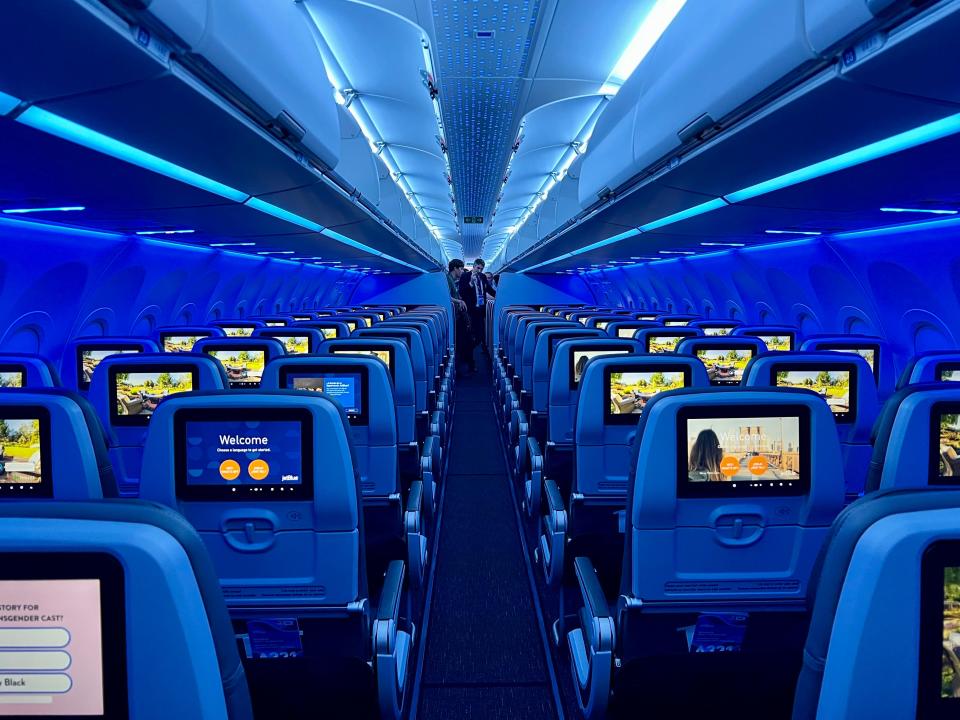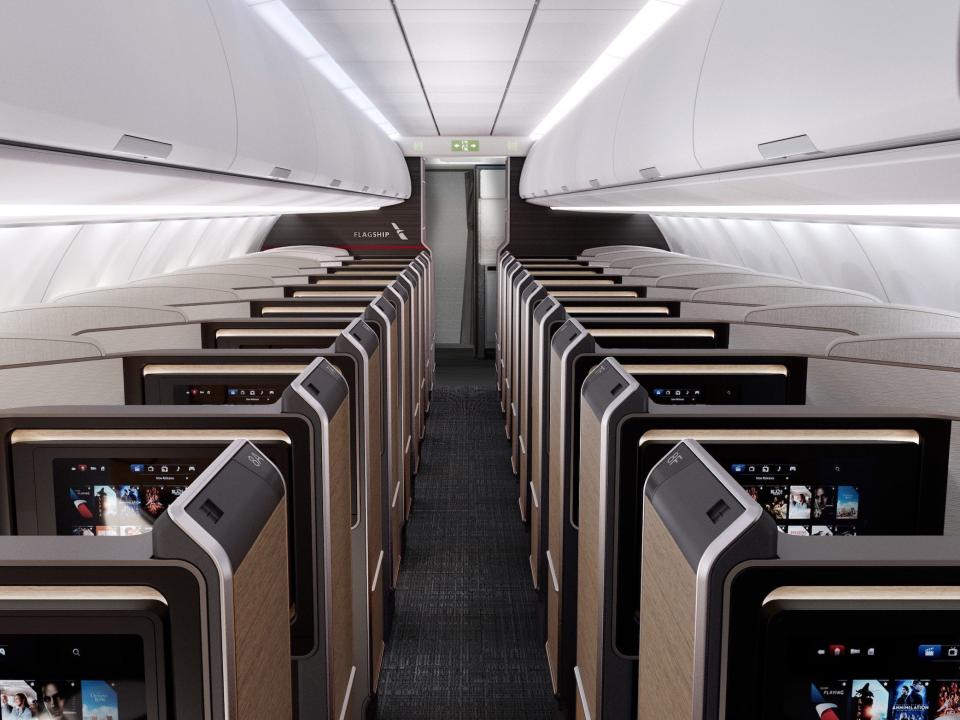Boeing rival Airbus is set to launch its game-changing A321XLR plane this year. Here's where it's expected to fly.
Airbus' A321XLR promises airlines new long-haul market options as it nears certification.
Boeing's absence at an upcoming international airshow means all eyes will be on Airbus' new plane.
Thanks to its extra rear center fuel tank, the narrowbody can fly up to 11 hours nonstop.
Boeing's quality control problems following the Alaska Airlines door plug blowout have forced it to scale back production and cut delivery targets for its 737 Max aircraft.
To better focus on cleaning up its latest Max mess, the manufacturer is not bringing any passenger planes to the Farnborough International Airshow this year, one of the aviation industry's biggest and most-attended events.
With nothing commercial to show from Boeing, which usually has its 777X and Max test jets on display, all eyes will be on European rival Airbus. Of particular interest is the planemaker's new, soon-to-be-certified single-aisle aircraft, the Airbus A321XLR.
Airbus has secured over 550 orders for the highly-anticipated "Xtra Long Range" model from American Airlines, Frontier Airlines, JetBlue Airways, United Airlines, Spain's Iberia, India's IndiGo, Qantas, Malaysian low-cost carrier AirAsia X, Chile-based budget carrier Sky Airline, Czech Airlines, and others.
The XLR plane is the longest-ranged option in the A321neo family, which has outsold Boeing's 737 since 2019, when two fatal crashes grounded the plane's Max variants.
According to Airbus, the XLR is uniquely equipped for long-haul flying, thanks to an extra rear center fuel tank that helps the narrowbody fly up to 5,400 miles (11 hours) nonstop.
It also boasts a 30% reduced fuel burn compared to previous-generation competing aircraft, with half the trip cost of dual-aisle planes, according to Airbus.
The XLR's enhanced range and economics make it a versatile option for airlines wanting to capitalize on niche money-making long-haul markets but without the costs or capacity of a widebody plane.
Historically, Boeing's 757 was the prime transatlantic narrowbody option, but airlines like JetBlue Airways and Air Canada have since shifted to the more efficient A321neoLR and Max, respectively, between the East Coast and Europe.

The XLR's design builds on this growing long-haul trend and is expected to open new city pairs that would otherwise require a layover or wouldn't financially make sense to fly.
Fortunately, airlines and customers won't have to wait much longer.
In May, Airbus announced that the XLR was in the final stages of certification, noting heavy paperwork has prolonged the process beyond the initially expected June timeline.
Still, Unlike Boeing's Max 7 and Max 10 planes — which are sitting in certification limbo — Airbus expects the XLR to enter service as soon as November.
Airbus' new XLR jet will open route options that are otherwise difficult
Spanish national carrier Iberia is the launch customer for the XLR and is selling tickets for the first-ever passenger flight from Madrid to Boston on November 14, according to its website.
Flights to Washington Dulles will follow on January 15. The XLR will replace the Airbus 330 widebody Iberia is presently flying to Boston, while the Dulles route will be a new offering.
According to Iberia, its new XLR planes will feature 182 seats across economy and business cabins, though the plane can carry up to 220 people in two classes.
The premium seating offers lie-flat beds typical to what customers find on long-haul widebody flights, and is likely to be the norm on long-haul XLRs.
JetBlue plans to install its Mint business class, for example, while American plans to install its XLRs with new Flagship suites.

In March, American's managing director of global network planning, Jason Reisinger, said the XLR is favorable because it enables the airline to serve "routes that cannot support a 787 but where we still have a nice onboard product."
He suggested routes like Raleigh, North Carolina, direct to London — meaning passengers wouldn't have to stop in the carrier's Charlotte or New York hubs along the way.
Meanwhile, United's EVP and CCO, Andrew Nocella, said during a 2019 order announcement that the XLR would be a good replacement for the "older, less-efficient aircraft currently operating between some of the most vital cities in our intercontinental network."
IndiGo and Frontier's XLR orders suggest the plane fits into both mainline and budget models.
IndiGo's former CCO Willy Boulte said in the summer of 2021 that the XLR would fill the gaps in flying between Indian cities and Europe and Asia, pointing to options like Beijing, Seoul, and Amsterdam.
Frontier CEO Barry Biffle has suggested that the XLR may allow Frontier to ditch its mostly domestic presence to serve more cities in South America, and launch new services to Hawaii and Europe.
Airbus said the XLR could also be used on already popular routes that may sometimes benefit from a lower-capacity option.
"Even well-established city pairs such as London-Miami or Sydney-Kuala Lumpur will benefit from the year-round sweet spot the XLR offers airlines," Airbus marketing specialist Ludek Jando said in September 2023.
Read the original article on Business Insider

